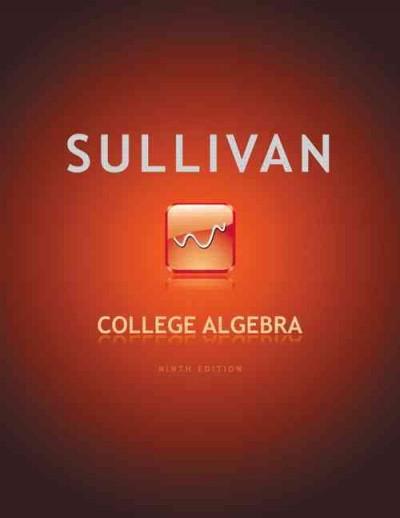Question
Directions: Show all your work when appropriate, and try to be well-organized and clear in your answers. Clearly indicate your final answers. There are 120
Directions: Show all your work when appropriate, and try to be well-organized and clear in your answers. Clearly indicate your final answers. There are 120 points on this test.
Questions 1 and 2 use the following set of population data.
43.2 52.5 57 57.7 63 74.6 75.2 77.3 78 84
84.1 84.7 85.9 87 88.5 92 92.2 93.7 97 97
(20 points) Construct a frequency table for the above set of data using seven classes, and showing frequency, relative frequency and cumulative frequency. Be sure to say whether you are considering the data to be discrete or continuous - this will affect how you set up the frequency table and the histogram you'll draw for it in question 2
class frequency relative freq. cumulative freq.
|
|
|
|
|
|
|
|
|
|
|
|
|
|
|
|
|
|
|
|
|
|
|
|
|
|
|
|
|
|
|
|
1
(10 points) Draw a histogram for the frequency table you constructed in question 1. You may use class midpoints or class boundaries for the horizontal axis to indicate the classes but be sure to say whether you are considering the data to be discrete or continuous.
2
52 53 57 59 63 77 78 82 84 84
84 87 89 90 92 93 93 95 96 97
(20 points) Find the 5 number summary for the set of data above, and draw a box plot for it.
(2 points) minimum =
(2 points) first quartile Q1 =
(2 points) median M =
(2 points) third quartile Q3 =
(2 points) maximum
(10 points) Draw the box plot:
3
(10 points) The table shows the number of each type of car sold in June.
Car | Number |
compact | 7,204 |
sedan | 9,089 |
small SUV | 20,418 |
large SUV | 13,691 |
minivan | 15,837 |
truck | 15,350 |
Total | 81,589 |
Construct a relative frequency table for the car sales, and draw a pie chart for it.
4
(20 points) For the following set of population data, complete parts (a) through (e):
26 17 17 14 12 23 26 10 17 28 30
(2 points) Write the data in order:
(2 points) Range = __________________
(Recall the range = maximum - minimum)
(2 points) Mode = ____________________
(5 points) Mean = ____________________
5
(6 points) Find the variance using the flowing table to organize your calculations:
deviation
|
|
|
|
|
|
|
|
|
|
|
|
|
|
|
|
|
|
|
|
|
|
|
|
|
|
|
|
|
|
|
|
|
|
|
|
|
|
|
|
|
|
(3 points) Find the population standard deviation
6
(10 points) An instructor in a large lecture class found at the end of the semester found that the mean was 530 and a standard deviation of 80.
Find the z-score of a grade of 613
What total point value would have a z-score of -1.4? What total point value would have a z-score of 2?
7
(5 points) In a data set whose distribution is skewed to the left, what would you typically expect to be the relative positions of the median, mean, and mode? Draw a picture illustrating the general shape of the histogram for this set of data, and also draw a box plot.
(15 points) A survey of 1207 American men were asked if they currently smoke cigarettes. Seventeen percent said yes.
For this survey, indicate the
Population
Sample
Parameter
Statistic
8
(10 points) Which sampling method is used for each experiment:
{Stratified - Systematic - Simple Random - Cluster - Convenience}
A random number generator is used to select a student from the alphabetical listing of all undergraduate students in the Fall semester. Starting with that student, every 50th student is chosen until 75 students are included in the sample.
A sample of 100 undergraduate San Jose State students is taken by organizing the students' names by classification (freshman, sophomore, junior, or senior), and then randomly selecting 25 students from each.
A completely random method is used to select 75 students. Each undergraduate student in the fall semester has the same probability of being chosen at any stage of the sampling process.
An administrative assistant is asked to stand in front of the library one Wednesday and to ask the first 100 undergraduate students he encounters what they paid for tuition the Fall semester. Those 100 students are the sample.
The freshman, sophomore, junior, and senior years are numbered one, two, three, and four, respectively. A random number generator is used to pick two of those years. All students in those two years are in the sample.
Step by Step Solution
There are 3 Steps involved in it
Step: 1

Get Instant Access to Expert-Tailored Solutions
See step-by-step solutions with expert insights and AI powered tools for academic success
Step: 2

Step: 3

Ace Your Homework with AI
Get the answers you need in no time with our AI-driven, step-by-step assistance
Get Started


